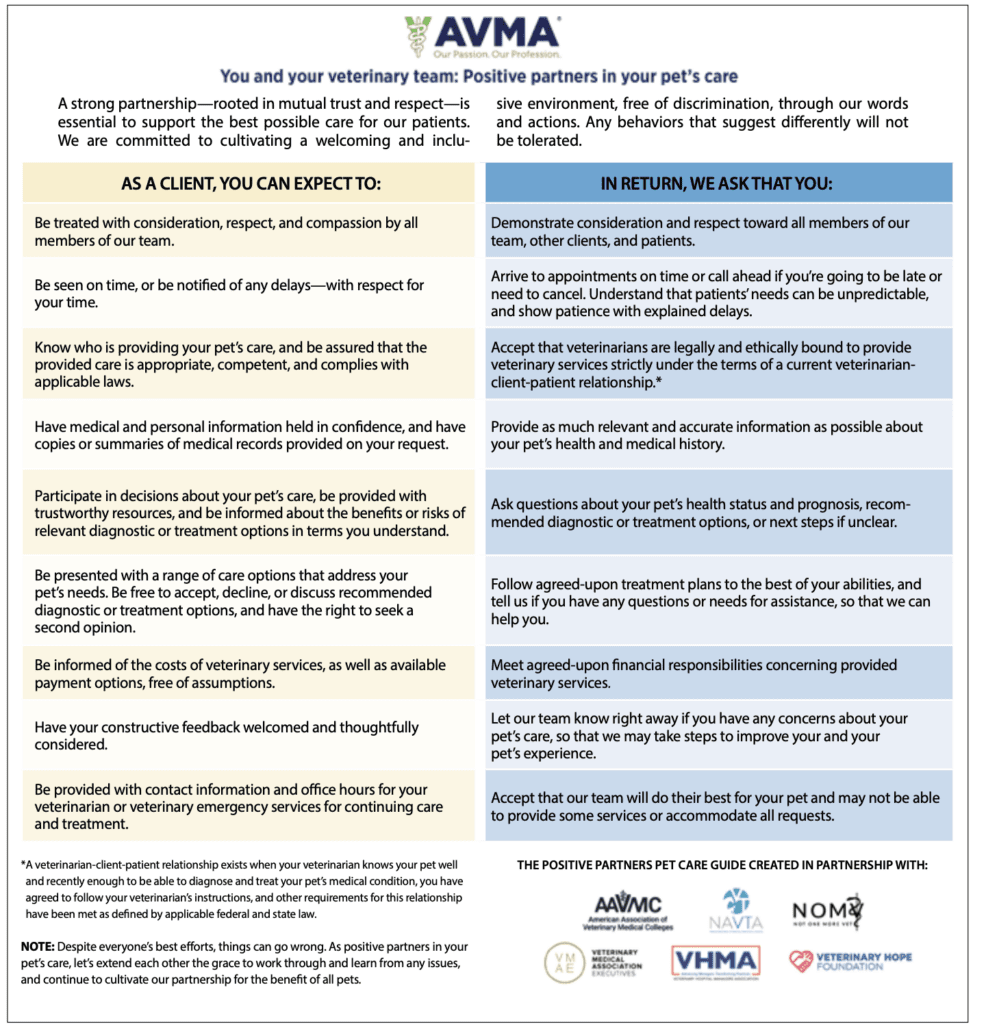Nearly one in two people with pets have gotten into a disagreement or heated interaction with their veterinarian or others on their animal’s veterinary staff. So says a survey of 1,000 people conducted by Banfield Hospital, which offers veterinary services in 42 states.
At the same time, a separate survey of more than 1,300 veterinarians conducted by the American Veterinary Medical Association (AVMA) indicates that nine in 10 veterinary professionals have experienced negative or “escalating” client interactions. Perhaps the pandemic and its tribulations have contributed to this slide toward mutual antagonism, but whatever the cause, it is painfully clear that all is not hunky dory at your cat’s doctor’s office.
To turn down the heat and strengthen the partnership between veterinarians and their human clients, the AVMA, in partnership with Banfield and a half dozen other organizations, have released the Positive Pet Care Guide. Some of the partners on the project include the American Association of Veterinary Medical Colleges, the National Association of Veterinary Technicians in America, and the Veterinary Hospital Managers Association. People with pets also gave direct input.
We’re all for this effort. Bad feelings get in the way of good cat care. Anything that can “help foster healthy lines of communication…between staff and pet owners,” as the AVMA puts it, will in turn improve cat health.
Among the issues addressed that can get those with cats hot under the collar: long delays in the waiting room that go well past the time of the appointment without any explanation for the extra wait; a lack of clear understanding about the costs of diagnostic procedures and treatment options; and not being provided with a clear enough understanding about the risks and benefits of the treatments available.
Among the issues that rankle veterinary staff: lack of respect for members of the cat’s healthcare team; being late for appointments without a heads-up by phone that there will be a delay; a lack of understanding that not all requests may be able to be accommodated no matter how much the veterinary office wants to make things easier for you or better for your pet.
Veterinary offices have begun posting the one-page Positive Pet Care Guide, but here it is for you to peruse in private to see what is fair for you to expect from your vet’s office as well as what is fair to expect from you as you interact with the doctor and others on the veterinary team.

Things will get better. Nearly 100 percent of the veterinarians surveyed indicated that they appreciate receiving constructive feedback from clients in a calm, respectful manner. Furthermore, more than six in 10 vets believe they can improve communication skills for themselves and/or their teams when working with clients. Similarly, more than six in 10 pet owners wish they better understood how to effectively communicate with hospital team members to avoid conflict. In other words, most are on board for learning and adhering to some ground rules for diplomacy.




